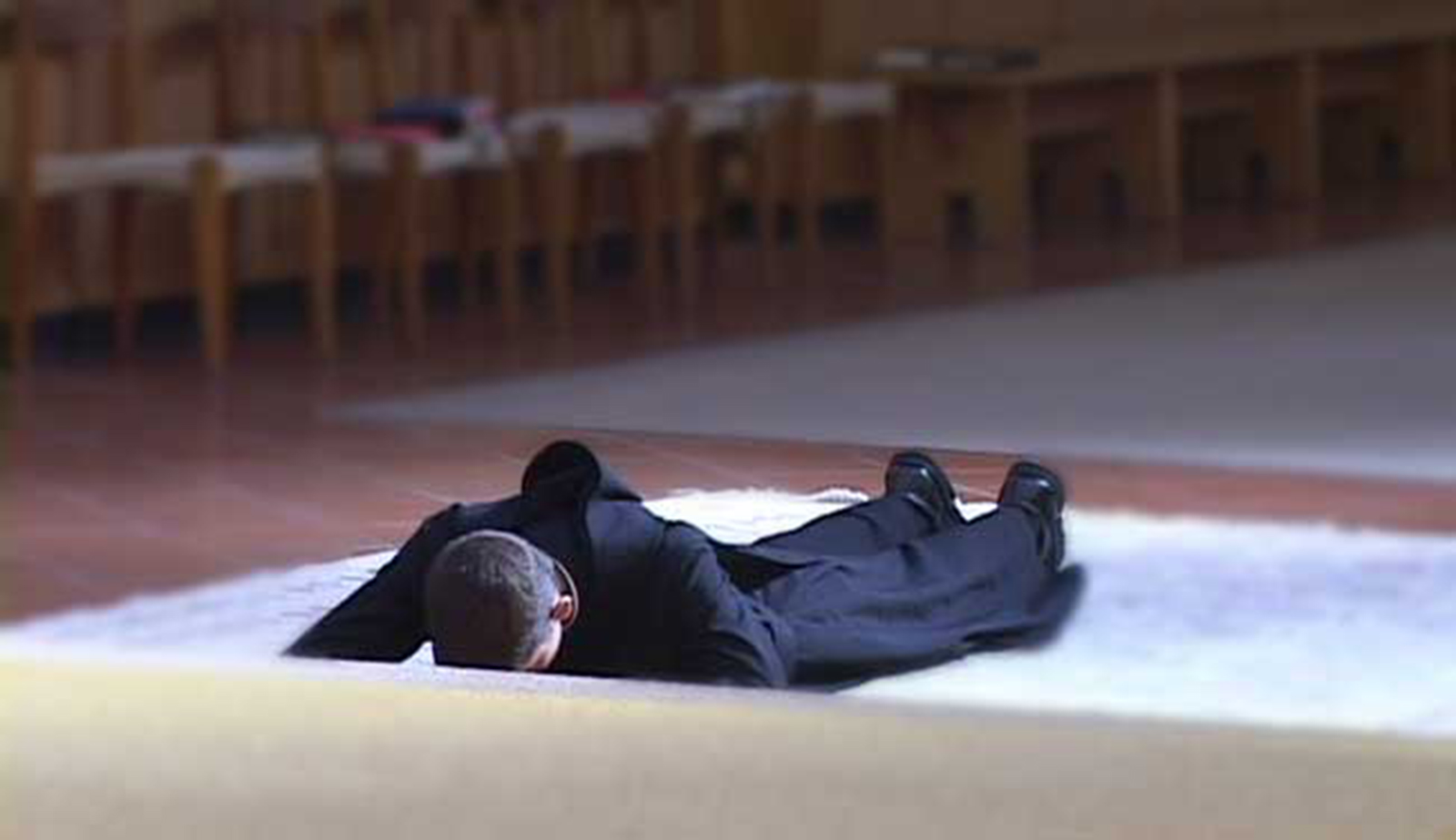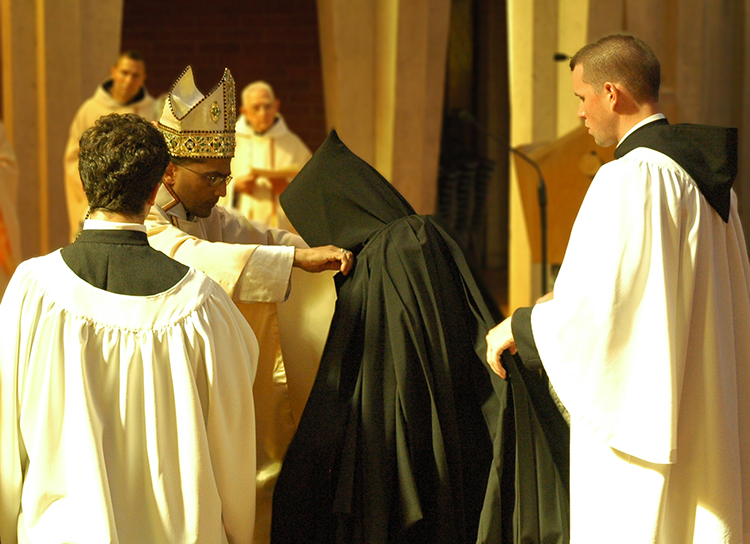Monastic Vows
“Let him who is to be received make before all, in the Oratory, a promise of STABILITY, CONVERSION OF LIFE, and OBEDIENCE, in the presence of God and of His saints…”
– Rule of St. Benedict, Chapter 58
From its roots in the abbeys of Engelberg in Switzerland and Mount Angel in Oregon, USA, Westminster Abbey draws the sap of monastic life which has nourished her growth over the years. The most distinctive ingredients of this sap are the vows of stability, conversion of life, and obedience which each monk makes at his profession. They bind the community together and set its orientation. They are its life, its heart. They call the community forth to its various apostolates: the formation of young men in the seminary, the welcoming of visitors in the guesthouse, and the cultivation of the herd and the land on the Abbey farm.
Stability
Stability means that a monk chooses to serve God within his monastic community at its location for the whole of his life. God, community and location – these are the three main aspects of stability. Life in community is much like life in the family. The abbot sets the direction and stands as a point of unity. At chapter meetings, for instance, it is he who puts forth important matters for discussion and then each professed monk is free to speak his mind on the matter. After having heard their counsel, the abbot decides what course of action to take for the good of the whole community. A community is held together by unseen bonds of mutual obedience and charity. An eloquent gesture of this is the monastic custom of waiting on each other at meals. “Let the brethren wait on one another in turn,” St. Benedict writes, “so that none be excused from the work of the kitchen…for thus is gained a greater reward and an increase of charity” (Holy Rule, Chapter 35). Furthermore, “let the brethren be obedient one to another, for by so doing they will come to God”, etc…

Ask a monk what weather at the Abbey is like and he’ll answer without a beat, “On average we get 80 inches of rainfall per year, almost twice as much as in White Rock on the coast.” Ask a monk of Westminster when swallows are in season and he’ll answer, “From the Solemnity of St. Joseph (March 19) to the Solemnity of the Assumption (August 15).” The Abbey’s stability of location leaves its mark on a monk. Conversely, the faith-filled, liturgical outlook of the monk also leaves its mark on this stable location to which his earthly life is bound. A flower blooms according to the soil that hosts it.

Conversion of Life
When it comes to the second vow of a monk, conversion of life, St. Benedict compares the monk to a pilgrim trekking toward a destination of rest. There is a path of growth he must travel: from the inquiring newcomer to the wise old man transformed into a likeness of Christ himself. There are also definite waypoints on the way. Most important of these is the profession of vows. When he lies face down on the Church floor while the whole congregation invokes the assistance of the saints, the monk dedicates his entire self to God in lifelong service in the community. He brings the fullest gift he has – the life God has given him – and lays it before him in offering. Profession is an extension of baptism. So the monk receives a new name, his religious name, and a new garment, the monastic habit which marks him out as one who has died to the world and to all it offers: the legitimate joy of marriage and family, personal possessions, a career, travel, and so on. From then on, his blossoming will be that of an ever-increasing identification with Christ in his suffering and in his glory.
Monks are often chided for their frugality. They only turn on the essential light bulbs. They like to make a piece of farm equipment last for decades. A few years ago, when the Abbey purchased a new tractor, the one it traded in was immediately earmarked by the dealership for refurbishing as an antique. That is all part of the logic of the pilgrimage to our heavenly homeland. “Surrounded by so great a cloud of witnesses, let us also lay aside every weight, and sin which clings so closely, and let us run with perseverance the race that is set before us.” (Hebrews 12:1) Conversion of life means leaving behind all that encumbers us, all that weighs us down, so that we can easily follow Christ, our trailblazer to his realm of glory.
Obedience
If stability inserts a man into a particular soil, and if conversion of life impels him to grow, what is the place of obedience? It is his response to the designs of the Divine Gardener. God tugs at the monk’s deepest core. He strives ever anew to give a wholehearted “Yes” to that summons. He listens for it in the Rule of St. Benedict, in the particular requests of his superiors, and in the circumstances of every day. What seems constricting to an outside observer is, in fact, freeing. As the monk leaves behind his security, ambitions and expectations, he finds his heart expanding and able to receive ever more of the sunny rays of God’s grace.
Obedience shapes not only the individual monk but also the whole community. As each one strives more steadily and firmly to follow God’s beckoning, he discovers with wonder that the promptings of the Spirit in his own heart are echoed in those of his confrere and accord with the instruction of his abbot and of the Church. A common desire to discern and follow God’s will brings about fruits of deep communion. It is a wonderful sight when all the flowers in the Divine Gardener’s plot are turned toward the same sun.


